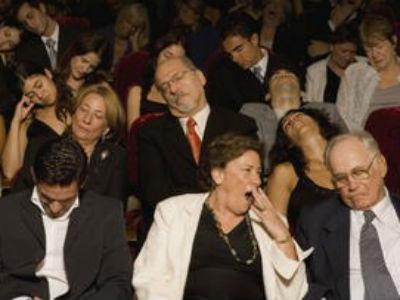The Fine Music Network is counting down to Opera Australia’s staging of Wagner’s Ring Cycle at the end of the year. On this month’s episode of Countdown to the Ring, we hit the streets of Melbourne to try to gauge the public on their knowledge on Wagner and The Ring Cycle.
Apart from several resounding ‘huhs?’ one of the more common responses was, ‘Wagner’s operas are just too long’.
This criticism has been levelled at Wagner since his operas were first produced but its validity in the 21st century deserves some analysis. Wagner’s operas are long. Tannhauser and Lohengrin end around the three-hour mark, and later operas such as Tristan and Isolde reach closer to a four hour length. The Ring Cycle has a gargantuan 15 hour running time. Is this just too long for a 21st century audience?
An obvious comparison to The Ring Cycle is J.R.R Tolkien’s Lord of the Rings. The theatrical release of the film adaptation reaches a combined run time of 558 minute (9.3 hours) and the Director’s Cut runs to 726 (more than 12 hours).
Yet our culture is still ravenously consuming Lord of the Rings – grossing $2.92 billion at the box office. The Hobbit, which elongates a single book into three feature length movies, has almost topped a billion at the box office since its launch last December. The ‘too long’ complaint is rarely brought up there.
Tom Hooper’s adaptation of Les Miserables – a book almost the size of Lord of the Rings– is two hours, fifteen minutes long at a theatrical release and has been criticised as too long. But the worldwide box office revenue of Les Mis stands at $233 million at the time of writing – further proof that there is still an audience willing to consume art despite its length.
Perhaps the biggest contemporary artistic achievements that compare in length to Wagner’s epics are the long-running, high quality television dramas that are beginning to reach new heights of seriousness and artistic and dramatic credibility in recent years. The Sopranos, The Wire, Breaking Bad, Downtown Abbey, Madmen and Game of Thrones are examples of high-budget, critically acclaimed television serials with an ambitious dramatic goals and a weighty chunk of audience regularly tuning in.
Game of Thronesis perhaps the most comparable to Wagner’s epic in being a fantasy-set character study. If you were to watch the entire first season in one sitting, you’re looking at a good ten hours of entertainment. While this sounds preposterous, I know I’m one of many guilty of such sloth-like behaviour. Yet brevity is never an issue for Game of Thrones fans. Why then, is length always an issue with Wagner?
For Wagner, one is required to sit down for three hours straight. While there may be intermissions, it’s a long period of time to maintain focussed attention and remain physically comfortable. Then, this experience is repeated another three times! The typical film, by comparison, runs to 127 minutes. A television season, which may be of Wagnerian length in total, is typically divided into hour-long chunks that offer the option splitting the long length into more manageable chunks. Both serialisation and the 127 minute running time are, among other things, safeguards put in place to conform to the physical and mental limitations of the average viewer. Some may still prefer to just sit down and consume an entire season in one sitting, but the option exists for more leisurely consumption. Wagner has no such compromise.
Perhaps the main reason that Wagner is too long for today’s society is the monologues of recapitulation. To ensure each opera can be viewed independently, each episode after Das Rhinegold contains some sort of character interaction that repeats the events that have occurred up to this point. Despite intelligent contextualisation, these sections take up a large portion of time, and while some new elements may be introduced to the narrative, if one has viewed every part up to this point, it is largely repetitive and slows the overall dramatic pace of the story.
Modern television does this too but instead of contextualizing the reminders in the narrative, an episode typically begins with a quick ‘previously on…’ montage that repeats scenes and details relevant to the episode to come. The brevity and swiftness of these sections stops them from interfering with the narrative immersion. For today’s faster-paced society this technique is more effective than the Wagner solution.
But is slowing the pace necessarily a bad thing? That’s another issue to examine as we prepare for the forthcoming Melbourne Ring Cycle.
Countdown to the Ring is a 10-episode series that dissects Wagner’s Ring Cycle and the forthcoming Opera Australia production, airing on Fine Music FM, 3MBS Fine Music Melbourne, 4MBS Classic FM Brisbane, 5MBS Adelaide and ArtSound in Canberra.





